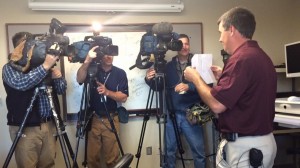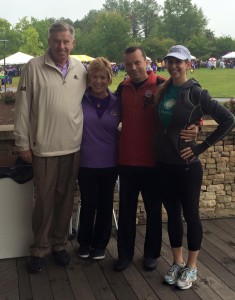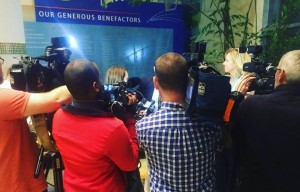By: Claire Simmons
Every January, millions of people reassess their lives, set new goals, declare their intentions and dive in to be the best versions of themselves. The promise for a fresh start is very compelling and enticing. Yet for all the hustlers and grinders, this is something that needs to happen not just in January, but every month of the year. There’s no need to wait to be amazing.
If you are committed to being a rock star, to becoming financially fearless, to being a leader and to living your dreams every day, then you need to learn how to give yourself an edge up on the competition. You need to focus on creating and maintaining energy all day long. You need to master efficiency so you can maximize the work and the profits in the least amount of time. People who can do this will be successful AND will create a life that is full of purpose, productivity and happiness.
Indulge me for a moment and let’s think about what an Olympic athlete does to prepare for competition. Their training is a 24/7 approach. Every single thing they do propels them to victory. Their sleep, their nutrition, their workouts, their mindset- it’s all calibrated to the nth degree to make them the best for that one chance at victory.
So if these athletes put in all that time and effort into that one chance- why would you, who literally competes for success every single day, not put in that same amount of effort to compete in the game of life? You could savor that triumphant feeling every night and allow your body and your mind to perform at its peak. Your work, your relationships and your mood will exponentially soar and you will conquer your goals every month- and not drop off the way most normal people do at the end of January.
Now let’s get into the call to action. This is the fundamental list for getting your edge, increasing energy and improving efficiency:
Fuel:
If you eat junk, you will feel like junk. Your body is a temple. Treat it as one and you will feel better than you have ever felt. While there is no “one diet fits all” I believe in keeping it simple and eating real foods. What’s real food? A rule of thumb is that it is made of one ingredient. Mix and match them to create an endless amount of variety and most importantly, for you to look and feel your best.
Habits:
A routine is a platform to success. There will inevitably be times to shift the routine, but at your core, learn what makes your body and mind feel and function best. How many hours of sleep do you thrive on? Are you most motivated at morning or night? Cut down on shallow hobbies that take away valuable time and drain brain power. You’ll be amazed at how much time you get back in your day when you become aware of what distractions have become habits. On the flip side, incorporating small but easy habits, such as walking 10 minutes after every meal, reading a few chapters of a motivational book a night, or having an engaging conversation on your drive home will give you an edge over everyone else.
Exercise:
The best exercise is the one that you will do the most often. Simple as that. Find a workout that you enjoy and commit to it. If you’re someone who despises the gym, then just make it a point to move regularly throughout the day. There’s no excuse for excessive sitting and laziness. Of course it’s uncomfortable at times, but if you want to change your mood, shift your energy and get a major rush of feel-good endorphins flowing through your body, then exercise is the number one way to do that.
Mindset:
The mind is so powerful. Most times our bodies give out first, or we stop because we feel tired and burnt-out. Those who strive to be successful know that this is all temporary and can be adjusted by refocusing as often as needed. Strengthen the mind with regular meditation, eliminating distractions when working on an assignment, creating a clean and aesthetically pleasing environment, and readjusting your attitude. If you’re still in a slump- change your environment. Do jumping jacks, get outside, take a mini break and jump back in with a fresh attitude. Fake it until you make it if necessary- get rid of the negative self-talk and tell yourself every day how awesome you are.
Finally, don’t put off living your best life until that “one day” in which all your dreams will magically come true. Don’t you want to be happy and successful every day? That can literally happen right now. Find what you love and weave it into your life immediately. If you commit to making yourself the best version of you; the rest will follow!
For more tips and daily motivation, follow @livingyourdreams_claire on Instagram and on Facebook @clairesimmonslivingyourdreams. Her previous WIMS Guide blog post can be found here.



